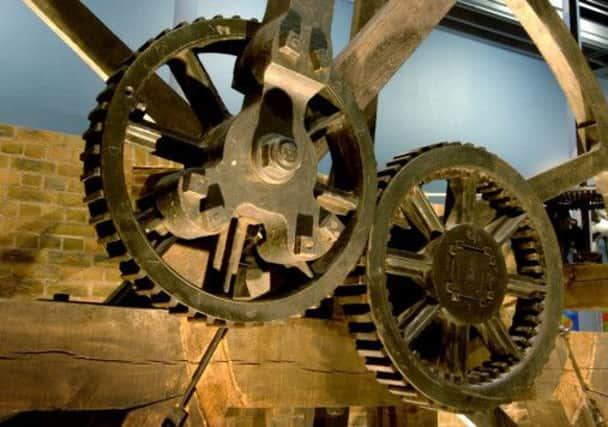Museum trips enhanced by work of model pioneers


FOR visitors of a certain age, the working models of objects from the world of engineering and machinery have always been one of the most popular attractions at the National Museum of Scotland. Push the button and watch them work.
Several examples remain throughout the museum, in the Scottish galleries and also the Window on the World in the Grand Gallery. Scotsman readers will be pleased to learn that there will be many more – some old, some new – in the forthcoming Science and Technology galleries, to inspire visitors of all ages to discover, appreciate and enjoy the important business of learning how things work.
Advertisement
Hide AdAdvertisement
Hide AdIn fact, the history of using working models as exhibits goes back to the very foundations of what is now National Museums Scotland. When the Industrial Museum of Scotland – the predecessor of National Museums Scotland – was founded in 1854 its aim was to present modern technology to its visitors, helping them to understand the rapidly changing world in which they were living.
The first director, George Wilson, was international and collaborative in his vision of the purpose and function of a museum of technology. He collected examples of materials, products and processes from around the world, including textiles and metal working, and was simultaneously the first Professor of Technology in the University of Edinburgh.
Even in Captain Francis Fowkes’s magnificent new museum building – by then the Edinburgh Museum of Science and Art, opened in 1866 – space was at a premium, which meant that full-size engineering exhibits had to remain few and far between.
Models were another matter, however – they would take up far less space and so allowed dozens of examples of key contemporary engineering designs to be shown.
Where possible these miniatures were made to operate at the turn of a handle or push of a button, becoming early examples of the interactive exhibits which are now a staple of science centres across the land.
Some models of steam engines and farm machinery were acquired from the University of Edinburgh in 1865. One of these, a one-eighth size single cylinder beam engine, is planned to be displayed adjacent to the full-size Boulton and Watt steam engine in the Connect hands-on science gallery, where it will be operated by visitors.
These models were evidently very successful and by the time of the late 1860s the Museum had established its own workshop for the manufacture of working models – an engineering factory in miniature, producing examples of the machinery for which Scotland was then becoming world famous.
In pursuing this policy the Museum determined that accuracy and authenticity was paramount, and it is these qualities which distinguish the models in the National Museum of Scotland as some of the finest in the world. This accuracy extended to the way in which the models were constructed – exactly the same processes and materials were used as in the full-size article.
Advertisement
Hide AdAdvertisement
Hide AdFirst, the subject for the model was chosen, representing an important engineering design or development, such as the North British Railway’s express steam locomotive Abbotsford of 1883, or Elder and Company’s compound engine for the steamship Zealandia of 1879. The manufacturers were then asked to provide copies of the design drawings – blueprints – for the full-size machines, and from these the Museum reproduced every component to exact scale. Wooden patterns were made for casting components, forgings fashioned and tiny nuts and bolts produced.
The finished models were real works of beauty – the locomotive carefully painted in two shades of green with blue lines, the steamship engine cylinders lagged in strips of mahogany held with thin strips of polished brass.
Power sources were an enduring subject for models, reflecting the growth of industry: in 1876 the workshops produced a one-sixth scale model of a Corliss steam engine for powering a mill or factory, made by Douglas and Grant of Kirkcaldy, and in 1921 a one-quarter scale diesel engine was made.
National Museums Scotland continues, as it has done for the last 150 years, to collect present and emerging technology.
There are all sorts of exciting new ways to use cutting-edge interpretation and digital interactives to illustrate science and technology, and these will be used throughout the new galleries.
However, there is still a very important place for using models even in illustrating contemporary developments because, while a lot of technology has reduced in size over that period, there are still big things.
So, when the six new galleries open in 2016, alongside the steam engines you may find models such as a Ferranti Atlas computer, a hydro-power alternator, new bridge designs and developments in harnessing wavepower.
The power of the model to illuminate and fascinate remains undimmed.
• Alexander Hayward is Keeper of Science and Technology at National Museums Scotland, www.nms.ac.uk
SEE ALSO